| Umělec 2003/3 >> RECYCLING OF NATIONAL MYTHS IN SERBIAN ART OF THE NINETIES | Просмотр всех номеров | ||||||||||||
|
|||||||||||||
RECYCLING OF NATIONAL MYTHS IN SERBIAN ART OF THE NINETIESUmělec 2003/301.03.2003 Zoran Erić | focus | en cs |
|||||||||||||
|
"Production of social space in FRY
It could be argued that the specific socio-political framework and context in the Federal Republic of Yugoslavia was in many ways unique in Europe. The way social space was produced, starting from the end of the 1980s in the former Socialist Federal Republic of Yugoslavia and later in the new Republics that were formed after its disintegration, was extremely harsh. The brutal civil wars and ethnic conflicts shaped the social space of these countries in a radical way, and the newly formed Federal Republic of Yugoslavia had an especially specific context due to UN sanctions, which were introduced in 1992 after the clashes in Bosnia and the cases of ethnic cleansing. One of the causes for the production of such a drastic social space could be seen in the strongest wave of ethno-nationalism recorded in recent European history, accompanied by the equally strong wave of populism, which was incidentally conceived and conceptualized in the highest scientific and cultural institution: Serbian Academy of Arts and Sciences, through its “Memorandum on Current Social Questions.” On the other hand, UN sanctions and the complete isolation of the country and breakdown of official communication with the rest of the world caused an “economy of destruction,” and economic collapse with the highest rate of inflation ever recorded. Rebirth of the Nation When the old communist system of values and the ideology of “brotherhood and unity” collapsed, a change in the cohesive forces within the society and the production of a new collective identity was unavoidable. The newly formed oligarchy that came to power in Serbia abused the fact that the citizens needed to acquire a new identity, to identify with a political or national program, or other goals. In this situation, when the question of collective identity became blurred and confusing for most citizens, it was easy to give in to the over-emphasized national identity, and the “rediscovery” that the national and ethnic identity was “older” than that of neighboring nations. The proof for this claim was found in the rich national history, so the process of re-circulating national myths, mainly from the Serbian Medieval Empire, began to powerfully shape public opinion through all the media. History therefore “became understood as an active force that defines the roots of the nations, feeds the constituent myths of ethnic groups and strengthens national identities.” Constitutional myths Among all Serbian constitutional myths, the myth of Kosovo is the most pervasive in revived ethno-national stories and phantasmagoria, and it points to the “Emperor” Lazar’s choice of the Divine Realm as the correct path and decision for the Serbian national character. This fits perfectly into the mythological, anti-historical perception of time, where time returns again and again in everlasting cycles, unlike the usual understanding of the linear flow of time in Judeo-Christian civilization. The final consequence of which took shape in populist stories, like this one by Božidar Vučurević, Serbian leader from Trebinje: “Even the dead we lined up to preserve, and we defend the dignity of the living; that’s why for Serbs history is not only a teacher of life, but also a teacher of death. St. Sava, Tsar Lazar, Njegoš, Karađorđe... they are still with us, reminding us of who we are and what we are.” It could even be said that just the mention of Kosovo and its myth became a choice and the determination for a myth — it became a “myth about a myth” as Ivan Čolović remarked. Serbian art as a machine for the re-circulation of national myths Re-circulation of national myths and especially the “ever-present” Kosovo myth played a significant role in the visual arts in Serbia of the 1990s. There is nothing unusual about the Serbian artist being inspired by this myth, and there are many examples in the history of 19th and 20th century art in which artists explored this topic; Ivan Meštrović, Paja Jovanović and Petar Lubarda are just a few of the many renowned examples. Nevertheless, it took a confluence of events to create enough impetus to bring the myth to life: the 600-year celebration of the Kosovo battle at Gazimestan in 1989, the moment when Milošević was firmly “enthroned” into power, carried by a wave of ethno-nationalism and populism in Serbia. It was no surprise that this wave respectively came back to haunt the sphere of culture and “contaminated” it. The effects of the social milieu, dominated by patriarchalism, authoritarianism, a warlike spirit, xenophobia, and national-chauvinism devastated the most important cultural institutions, which started to reproduce the ideological matrix. Very soon, and mainly when the war in Bosnia started in 1992, the motif of the Kosovo Battle emerged as being an extremely important one among the many “nationally conscious” artists, and it was even recognized in anticipation of a new national uprising in some paintings of the 1980s. More important than the actual historical topic, or stylistic and artistic language was the “interpretation” from the ideologists of national “renaissance.” The performative role of the artworks presented in the highest national institutions of culture, like the National Museum and the Museum of Contemporary Art in Belgrade, was given the task of glorifying the history of the Serbian people. They could be read as symptoms of the social pathology of the milieu from which they originated, and they contributed to a great degree to the above-outlined social space and the reproduction of the hate speech that was present in all media. Key personalities and ideologists A brief outline is possible of the several important moments and personalities in the whole body of acts and events that contributed to the creation of such a cultural scene. One of the first and most decisive was a major retrospective held in 1991 in the National Museum for painter Milić od Mačve; this was the first case of this kind of show dedicated to a living artist, who presented more then 300 paintings. It was pure political statement, and Milić od Mačve fit exactly the stereotype of the romantic myth of the “great national painter.” What was more important was his public persona, his appearance and radical nationalist orientation from the beginning of his career, which culminated in hatred and poems of defamation to the United States and a “new world order.” The last cycle of paintings that he made in 1989 and exhibited was devoted to the Kosovo Battle under the title Kosovo — First Serbian Threshold. Dragoš Kalajić, whose discourse has a long history, is one person who could be called an ideologist of the anti-modern disposed, nationally revived painters; he is someone who cherishes a kind of cult of unique artistic genius and original artistic expression, driving inspiration from the local environment. Kalajić was an artist, prolific writer and media star; he ran a TV show on art and culture, but also on the “degeneration of Western civilization.” As a member of the board of MCA Belgrade, Kalajić demonstrated his discourse at its peak with an exhibition entitled Balkan Origins in Serbian Twentieth Century Painting held in the summer of 1994 at the re-named Belgrade Summer Festival, that year called The First Meeting of the Spiritually Close Eastern Christian Peoples. Another important figure was Dragan Malešević Tapi who was a frequent guest on many TV shows featuring clairvoyants. His topics included occultism, esoteric science, mysticism, freemasonry, all kind of cults, and he was recognized as an “expert” in the field. He publicly claimed that he was the reincarnation of one famous Dutch painter from the seventeenth century, and never hid his suspicious past and connection to the Serbian “tough guys.” He mirrored in his public appearances all the “virtues” that the audience in a pathological society wanted to see and expected a “celebrity” to represent. And indeed he was the most publicly famous of all the artists, and in the late 1990s he even ran a TV school for painters. These artists’ awareness of the role of media in self promotion was an important aspect in their ability to impose themselves on the public as genuine Serbian geniuses — and all of them embraced this opportunity, unlike the artists from the “compulsory alternative” scene, whose strategy of “resistance” to the dominant ideology manifested itself in a withdrawal from the public and media spheres and engagement in a strategy defined as active escapism. Same motif seen through a different lens From this other position emerged examples of art practices that used the same motif, but the intention here was to loosen the tight grip of the mythical legacy by recontextualizing, and rereading it. The examples of works by Predrag Nešković, Čedomir Vasić and Ivana Jakšić showed a conceptual approach that had a different agenda. Artists from different generations and artistic backgrounds, but not integrated into the dominant ideological structure, reflected, thematized and deconstructed the produced and recycled national mythology. Predrag Nešković who started his career in the 1960s with a tendency towards new figurative painting, played with the kitsch aspects of traditional art and folklore in his series of paintings, which resembled the esthetics of needlepoint. He introduced in them many references from historical motifs, as well as popular culture. Čedomir Vasić, one of the first artists from the generation of the 1980s working in video and video installation, used interactivity as a way to give his audience a chance to print and reproduce the famous motif of the Kosovo Girl, who tends to the wounded after the battle. Vasić played with digital media to erase the motif from a famous painting by Uroš Predić from 1919, and leave the plain landscape of Kosovo, like an empty signifier where one projects fantasies and inscribes the mythical narrative. Finally, young artists Ivana Jakšić used the figure of the national hero Kraljević Marko (Prince Marko) in a series of paintings divided into the segments of a grid. She represents him as if he were an actor in a Pack Man-like video game. The painterly structure resembles a pixilated monitor image, in which this artist inserts the most recent ironic interpretation and deconstruction of Serbian national myths. "
01.03.2003
Рекомендуемые статьи
|
|||||||||||||
|
04.02.2020 10:17
Letošní 50. ročník Art Basel přilákal celkem 93 000 návštěvníků a sběratelů z 80 zemí světa. 290 prémiových galerií představilo umělecká díla od počátku 20. století až po současnost. Hlavní sektor přehlídky, tradičně v prvním patře výstavního prostoru, představil 232 předních galerií z celého světa nabízející umění nejvyšší kvality. Veletrh ukázal vzestupný trend prodeje prostřednictvím galerií jak soukromým sbírkám, tak i institucím. Kromě hlavního veletrhu stály za návštěvu i ty přidružené: Volta, Liste a Photo Basel, k tomu doprovodné programy a výstavy v místních institucích, které kvalitou daleko přesahují hranice města tj. Kunsthalle Basel, Kunstmuseum, Tinguely muzeum nebo Fondation Beyeler.
|







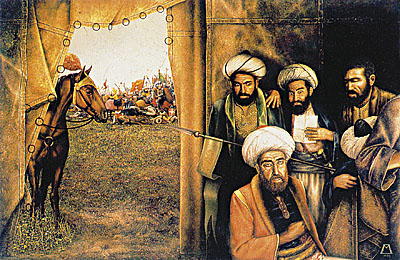












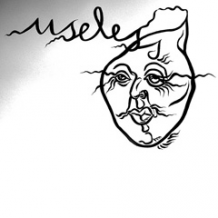






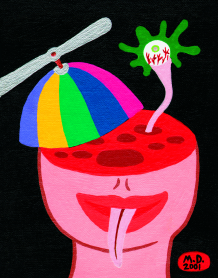




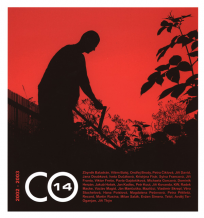
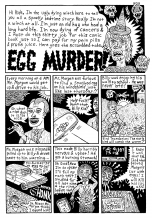
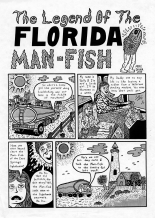
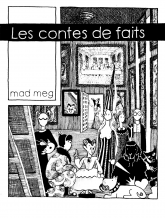


 We Are Rising National Gallery For You! Go to Kyjov by Krásná Lípa no.37.
We Are Rising National Gallery For You! Go to Kyjov by Krásná Lípa no.37.
Комментарии
Статья не была прокомментированаДобавить новый комментарий